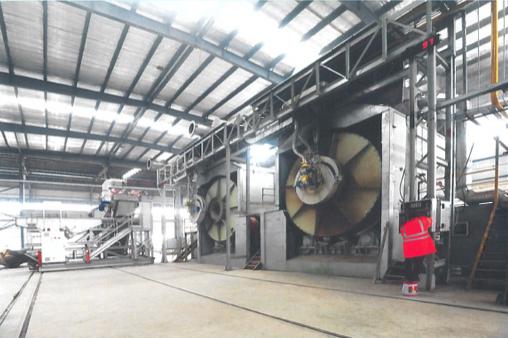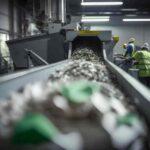The global market for automotive battery recycling plants is growing steadily as interest in sustainability and environmental impact reduction increases worldwide. According to a Grand View Research report, the global market for automotive battery recycling plants is expected to reach $22.8 billion by 2028, with a compound annual growth rate of 8.2% from 2021 to 2028.
What to consider to project a battery recycling plant
Based on this informations, we want highlight the actions that a company should undertake to establish a lead-acid automotive battery disposal plant.
To establish a lead-acid automotive battery disposal plant, a company should undertake the following actions:
- Evaluate local market demand: before investing in a battery recycling plant, it is essential to evaluate local market demand. A company should analyze market trends, competition, and government regulations governing battery disposal. Additionally, it should consider the availability of raw materials, energy rates, and workforce.
- Acquire authorizations and licenses: to establish a lead-acid battery disposal plant, a company must obtain the necessary authorizations and licenses from local and national authorities. This includes obtaining environmental permits, construction permits, and operating permits.
- Choose suitable recycling technology: there are several recycling technologies available for lead-acid battery recycling, such as rotary kiln technology, hydrometallurgical process, and pyrolysis process. A company should select a technology that is suitable for its specific needs in terms of process efficiency, costs, environmental impact, and safety.
- Invest in equipment and machinery: a company should invest in the equipment and machinery necessary for lead-acid battery recycling. This includes separation equipment, crushing equipment, and machinery for emissions treatment.
- Hire specialized personnel: a company should hire specialized personnel who have the skills and knowledge required to manage the lead-acid battery recycling plant. This includes technicians, engineers, safety experts, and machine operators.
- Implement safety procedures: a company should implement safety procedures to ensure that the lead-acid battery disposal plant is safe for personnel and the environment. This includes personnel training, emergency procedures, waste management, and fire prevention.
Establishing a lead-acid automotive battery disposal plant requires a thorough evaluation of the local market demand, acquisition of authorizations and licenses, selection of suitable recycling technology, investment in equipment and machinery, hiring of specialized personnel, and implementation of safety procedures.
Cost of setting up battery manufacturing plant
Based on the previous information, the 9 cost items that a company would incur in establishing a lead-acid automotive battery recycling plant are as follows:
- Land acquisition and preparation: includes the cost of purchasing or leasing land and preparing it for the construction of the recycling plant, such as site clearance, grading, and construction of access roads.
- Construction costs: includes the cost of building the recycling plant and installing the necessary equipment and machinery, such as separation equipment, crushing equipment, and machinery for emissions treatment.
- Permitting and regulatory compliance costs: This includes the cost of obtaining environmental permits, construction permits, and operating permits, as well as complying with local and national regulations governing battery disposal.
- Personnel costs: includes the cost of hiring specialized personnel, such as technicians, engineers, safety experts, and machine operators, as well as providing personnel training and benefits.
- Raw materials and utilities costs: includes the cost of purchasing raw materials for the recycling process, such as lead-acid batteries, as well as the cost of utilities, such as electricity and water.
- Maintenance and repair costs: includes the cost of maintaining and repairing equipment and machinery, as well as the cost of periodic inspections and upgrades to comply with regulatory standards.
- Marketing and advertising costs: includes the cost of promoting the company’s battery recycling services, such as advertising and marketing materials, and attending trade shows and conferences.
- Insurance and legal costs: the cost of obtaining insurance coverage for the recycling plant and personnel, as well as legal fees for contractual agreements, permits, and regulatory compliance.
- Financing costs: the cost of obtaining financing for the establishment of the recycling plant, such as interest payments on loans and fees for financial services.
Machinery cost for a recycling capacity plant o 150,000 tons/year
The potential costs for machinery and equipment required for establishing a lead-acid automotive battery recycling plant that recycles an average of 150,000 tons of batteries per year can be estimated to be between $3 million to $10 million.
The cost of machinery and equipment is one of the most significant cost components of establishing a recycling plant. The specific equipment and machinery required will depend on the selected recycling technology, the plant capacity, and the efficiency and safety standards that need to be met.
Some of the essential machinery and equipment that a lead-acid battery recycling plant might require include:
- Battery-breaking machine: This machine is used to break down the batteries into smaller pieces to facilitate the recycling process. The cost of such machines can range from $500,000 to $2 million.
- Separation equipment: This equipment separates different components of the battery, such as lead, plastic, and electrolytes, into different streams for further processing. The cost of separation equipment can range from $1 million to $5 million.
- Smelting furnace: The smelting furnace is used to melt the lead from the battery components. The cost of smelting furnaces can range from $1 million to $5 million.
- Emissions treatment equipment: This equipment is used to treat the emissions generated during the recycling process to meet environmental regulations. The cost of emissions treatment equipment can range from $2 million to $5 million.
- Material handling equipment: Material handling equipment, such as conveyor belts and forklifts, are essential for moving the batteries and components through the recycling process. The cost of material handling equipment can range from $500,000 to $2 million.
- Control systems: Control systems, such as automation and software, are critical for efficient and safe plant operations. The cost of control systems can range from $500,000 to $2 million.
Comments are closed.





